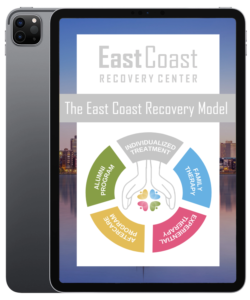Individuals who chronically use the addictive drug methamphetamine have probably experienced the sensation of meth mites. Meth mites, also known as “meth bugs” or “crank bugs,” refer to a common hallucination experienced by meth users. The sensations of these imaginary bugs can drive a person crazy and lead to intense itching. While these sensations are vivid and distressing for those experiencing them, it is important to note that meth mites are entirely fictional and have no basis in reality.
In this article, we will cover what meth mites are, the causes and effects of meth mites, the impact f meth psychosis, and treatment options for meth addiction.
Meth Addiction
Before we begin discussing meth mites, we must know the basics of meth addiction. Methamphetamine is a powerful and highly addictive stimulant that targets the central nervous system and increases dopamine levels in the brain. Because the effects of meth begin rapidly and fade just as fast, many people often take meth in repeated doses in a binging form. This causes people to give up basic necessities such as eating and sleeping for days at a time.
Side Effects of Meth Addiction
Methamphetamine addiction is a severe and complex disease with profound physical, psychological, and social consequences. The side effects of meth addiction can vary depending on a variety of factors and may differ from person to person. Here are some common side effects of meth addiction:
- Extreme weight loss
- Excessive sweating
- Paranoia
- Irregular heart rate
- Increased blood pressure
- Irregular sleep patterns
- Changes in brain function
- Intense itching
- Hallucinations
What are Meth Mites?
Meth mites are a common term to describe the imaginary sensation of insects crawling on or under the skin experienced by some individuals using methamphetamine. These hallucinated bugs are a form of tactile hallucination where users feel the physical presence of something that is not there. People who experience this may feel intense itching, burning, or tingling, which can lead to a compulsive urge to scratch or pick at their skin.
The sensation of meth mites is considered a type of formication that is perceived through touch and sometimes sight. Formication is derived from the Latin word formica, meaning ant. This translates to experiencing the sensation of little bugs, or ants, crawling on your skin. Formication can manifest in various conditions and substance use disorders. In the case of meth mites, the tactile hallucination is felt and can be perceived visually, known as visual formication.
The Effects of Meth Mites
While meth mites are entirely imaginary, the perception of these bugs can significantly impact a person’s well-being. The effects of meth mites can not only harm a person psychologically but also cause physical damage.
The main effect of meth mites is damage to the skin. Since those who experience meth mites tend to itch and pick at their skin, it can cause skin irritations, rashes, blisters, infections, and meth sores. Meth sores result from excessive skin picking and range from small red dots to open wounds or scabs that have become infected.
Meth mites can also cause psychological damage to a person. These sensations can often become overwhelming, leading to an individual developing a compulsive disorder or irregular sleep patterns. Additionally, the distressing nature of meth mites may cause individuals to isolate themselves socially to avoid judgment or to focus exclusively on dealing with the hallucinations.
Why Do Meth Mites Happen?
There are three main reasons why meth mites may occur. These reasons are:
- Excessive Sweating: As meth use raises your body temperature, you may experience excessive sweating. The sweat removes the natural oils on your skin and then evaporates, leaving the skin feeling dry and dehydrated. This can lead to the sensation of bugs crawling on you and is a reasonable explanation for meth mites.
- Sleep Deprivation: Many users of meth will go on binges of abusing the drug, resulting in individuals going days without any sleep. After a few days of no sleep, it’s common for people to develop hallucinations. Add in the meth use, and the belief in meth mites, and it can easily lead to the development of meth mites.
- Malnutrition: Frequent methamphetamine use may cause individuals to suffer from malnutrition, leading to a lack of essential nutrients that maintain healthy skin and prevent dryness. Dry skin increases the frequency and intensity of itching, especially in the drug-induced state experienced by meth users.
Methamphetamine Psychosis
According to the National Institute on Drug Abuse, an estimated 2.5 million people used methamphetamine in 2021. It’s also estimated that anywhere from 26% and 46% of methamphetamine users have experienced meth-related psychosis, putting between 650,000 to 1.1 million people at risk of experiencing meth mites.
Methamphetamine psychosis is a severe and potentially dangerous side effect of meth use. Psychosis is a mental health condition that can bring hallucinations, paranoia, and delusions, leading to a loss of reality. As some effects of meth abuse also cause these delusions, they can become exacerbated, leading to the sensations of meth mites.
Treatment for Meth Addiction
Those who have experienced meth mites or are experiencing meth addiction may be looking for treatment options to help start their recovery journey. While many different treatments are available, it’s important to remember that the treatment should be tailored to your specific needs to ensure the best care. Some treatment options for meth addiction are:
- Medical Detox: This is a common first step in recovery and allows the body to eliminate any toxins from methamphetamine use. It’s best done medically supervised in a drug rehab or treatment facility.
- Behavioral Therapy: Behavioral therapy includes various forms of therapy. This can include changing thought patterns, positive reinforcements, and motivation to quit drug use.
- Support Groups: Support groups like Crystal Meth Anonymous (CMA) or Narcotics Anonymous (NA) can be beneficial. These groups provide a supportive environment where individuals can share their experiences and receive ongoing encouragement to maintain sobriety.
Meth Addiction Treatment in Boston, MA
Methamphetamine abuse can cause many health problems impacting your entire life. Battling a drug addiction can be difficult, especially one as addictive as meth addiction. However, there is hope for recovery.
East Coast Recovery Center in Boston, MA, is a holistic addiction treatment center focused on providing our clients with the best care possible. We achieve this by offering evidence-based, individualized, and effective treatment programs that address every client’s needs. By doing this, we ensure that we are tackling the source of substance abuse.
If you or a loved one are struggling with meth addiction or substance abuse, contact us today to learn more about our programs. East Coast Recovery is where your healing journey begins.












